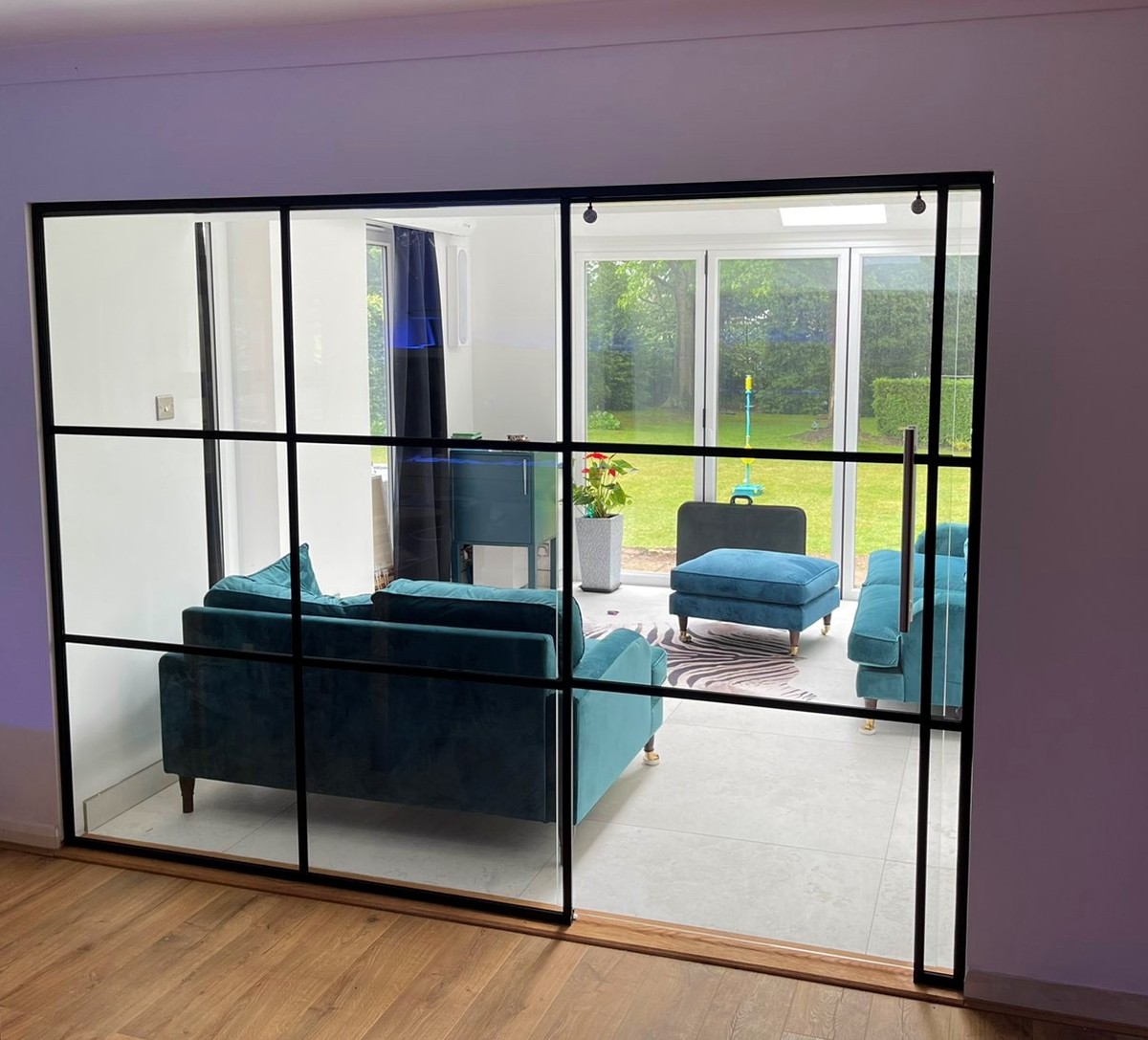
Across the UK, glass wall panels are becoming an integral feature in both residential and commercial interiors. From contemporary flats and family homes to modern office environments, they offer a refined way to shape interiors without relying on bulky walls or intrusive structures. Their popularity stems from their ability to create division, increase light flow, and add a sleek, architectural finish to spaces that demand more from their layout and design.
This article is written to guide your decision-making process, whether you’re a homeowner upgrading your interiors or a professional planning a new workspace. You’ll find practical insights into the types of glass wall panels available, key benefits to consider, budget expectations, and important installation tips. It’s your go-to reference for selecting a panel system that not only fits your space but performs long-term based on how you live or work.
Understanding Glass Wall Panels
Glass wall panels are flat, durable sections of safety-treated glass used to create partitions, enclosures, or visual features within an interior. Unlike full-construction walls, these panels provide division without visually cutting off the space, which is especially useful in modern layouts where light, transparency, and efficient use of space are valued.
They’re commonly used in offices to separate meeting areas or collaborative zones; in homes, they’re ideal for enclosing staircases, dividing kitchen and dining areas, or creating private spaces without darkening the room. Depending on your design goals, they can be purely functional or serve as bold decorative features.
Benefits of Glass Wall Panels
1. Improved natural light distribution: By replacing opaque structures with transparent or translucent glass, wall panels allow daylight to reach deeper into the room, reducing the need for artificial lighting during the day.
2. Contemporary visual appeal: Glass panels lend a clean, modern look to both residential and commercial interiors. They blend easily with various materials, from wood and steel to concrete and tile, making them versatile design elements.
3. Visual continuity in layout: Glass panels define spaces while preserving flow and connectivity, especially in open-plan interiors where a more seamless visual layout is desired.
4. Ease of upkeep: High-quality glass panels are low maintenance. Their smooth surfaces are easy to clean, and with proper care, they maintain their clarity and finish for many years.
Types of Glass Wall Panels
1. Frameless glass panels
Frameless panels are designed to be sleek and nearly invisible, mounted using minimal hardware. These panels are perfect for modern offices, minimalist homes, or areas where a clean and uninterrupted line is needed. While they offer premium aesthetics, they often come at a higher price point and require skilled installation due to their precision and weight.
2. Framed glass panels
Supported by aluminium, timber, or steel structures, framed glass panels introduce more definition and can enhance architectural character. These are ideal for traditional or industrial-style interiors where the frame becomes part of the design. They offer greater structural strength and are often more straightforward to install compared to frameless options.
Related Read: Frameless vs. Framed Office Partitions
3. Privacy & frosted glass panels
These panels are designed to obscure the view while still allowing light to filter through. Available in acid-etched, sandblasted, or laminated finishes, they are most often used in bathrooms, bedrooms, offices, or anywhere discretion is important. Depending on the finish, they can soften the overall look of a room or add subtle texture to the design.
4. Decorative & customised glass panels
For those seeking something more expressive, decorative panels offer endless design flexibility. From coloured tints and textured finishes to custom-printed or patterned glass, these panels are as much about art as they are about utility. They’re commonly found in boutique shops, hospitality spaces, and homes that prioritise style and individuality.
How to Choose the Right Glass Wall Panels
1. Define the panel’s purpose
Start by identifying what the panel needs to achieve. Is it there to divide a space while maintaining light? Provide privacy in a shared area? Act as a statement feature in a hallway or reception? Panels used for practical partitioning should prioritise strength and clarity, while those for privacy benefit from frosted or laminated finishes. If you’re aiming for a decorative effect, textured or coloured panels may be more appropriate, often doubling as functional art within the space.
2. Consider your budget
Costs can vary widely depending on the type of glass, framing, and customisation involved. Frameless and custom decorative panels tend to sit at the higher end, while standard framed or frosted options offer a more cost-effective solution without sacrificing quality. Budgeting should also account for installation, which can add significantly to the overall spend depending on complexity and location.
3. Evaluate durability and maintenance
In high-traffic or moisture-prone areas, such as hallways, kitchens, or bathrooms, panels need to withstand regular contact and be easy to maintain. Tempered and laminated glass are the most durable options, resistant to impact and less likely to shatter. For ease of cleaning, opt for smooth finishes over deeply textured or patterned glass, and avoid materials that require special care unless you’re prepared to maintain them regularly.
4. Assess acoustic requirements
If the panel is being installed in an office, meeting room, or a busy household where sound transfer is a concern, consider acoustic-rated glass panels. These are engineered to reduce noise and improve privacy without sacrificing transparency. For environments where quiet is essential like home studies or client-facing areas, sound control can be just as important as visual separation.
Glass Wall Panel Installation Tips
1. Installation process overview
Our installations begin with a site assessment, followed by accurate measuring and design confirmation. Depending on the type, panels are then prepared (often custom-cut), fitted using brackets or frames, sealed appropriately, and inspected for alignment and stability.
2. Tools and materials required
Common tools include glass lifters, level lasers, measuring tapes, silicone sealants, protective gloves, and anchoring systems. In many cases, installation requires two or more people due to the size and weight of the panels.
3. Challenges to expect
Some common issues include misalignment due to uneven floors or walls, incorrect measurements, and difficulties handling larger panels. These risks can be significantly reduced by working with a professional supplier and installer like Kova Partitions, who understands load-bearing requirements, compliance standards, and material handling best practices.
Maintenance and Care
To preserve clarity and prevent damage:
1. Clean glass panels regularly using a soft cloth and pH-balanced glass cleaner.
2. Avoid abrasive sponges or ammonia-based products that can scratch or dull the surface.
3. Pay attention to edges and seals, especially near kitchens, bathrooms, or entrances to prevent buildup or corrosion.
4. For decorative or frosted finishes, use specialised cleaners guidelines to protect the surface treatment.
Popular UK cleaning brands like Method Glass & Surface or Astonish Glass Cleaner are widely recommended for routine maintenance.
Cost of Glass Wall Panels in the UK
| Panel type | Typical price range (per m²) |
|---|---|
| Frameless glass panels | £350 – £700 |
| Framed glass panels | £250 – £500 |
| Privacy/frosted panels | £280 – £600 |
| Custom/decorative glass panels | £400 – £850+ |
What influences cost:
1. Glass type and thickness
2. Framing material (if any)
3. Customisation level (printing, texturing, colour)
4. Panel size and quantity
5. Installation location and complexity
Prices may vary, contact us for a quick quote. For large projects, economies of scale may offer savings.
Conclusion
Glass wall panels are a versatile solution for anyone looking to define, upgrade, or enhance interior environments. By understanding your goals, choosing the appropriate panel type, and investing in expert installation, you ensure a result that is not only visually impactful but also built to last. Get in touch with us today, and our experts will guide you through the process of selecting and installing the perfect glass partition to bring your vision to life.
FAQs
Yes. Most panels are made from toughened or laminated safety glass that complies with UK building standards, making them suitable for use in homes and offices.
.
Standard panels offer limited sound control, but acoustic glass panels are available and highly effective for reducing noise transfer in offices or between internal rooms.
With proper care, high-quality panels can last 15 to 20 years or longer without significant wear or degradation.
They can be, depending on the type, finish, and installation requirements. While framed and standard panels are more cost-effective, frameless and decorative options tend to be at the higher end of the scale.
Absolutely. Panels can be customised in size, shape, colour, texture, and even printed design to align with your space and design vision.













